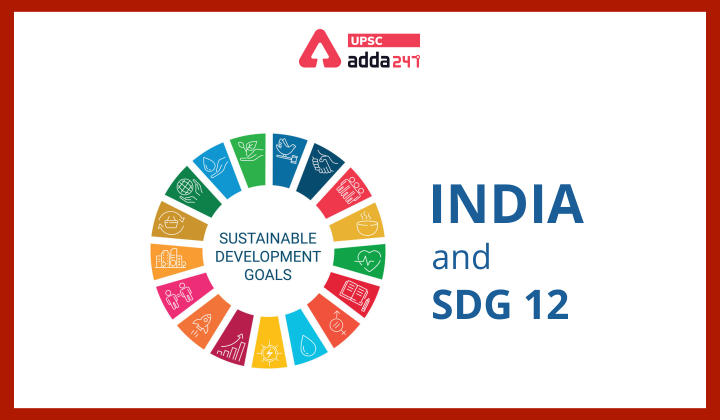Table of Contents
Relevance
- GS 2: Issues relating to development and management of Social Sector/Services relating to Health, Education, Human Resources.
Context
- Recently, it was reported that India’s progress in regard to the SDG 12 is fair enough but not satisfactory.
SDG 12
- The United Nations-mandated Sustainable Development Goal (SDG) 12 deals with resource usage.
Resource usage in India
- According to 2015 statistics, the average lifestyle material footprint of India is around 8,400 kilograms per capita per year.
- It is acceptable as the SDG asks to maintain sustainable material footprint of 8,000 kg per capita.
- India has achieved a relative decoupling with respect to material footprint and domestic material consumption while resource-exporting nations like Russia saw a decline in resource productivity.
Food wastage
- The SDG 12.3 focuses on reducing per capita global food waste by 2030.
- In the UNEP report 2021, about 50 kg food is wasted per person per year in India.
- India, however, among South Asian countries, has lower level of food wastage compared to its neighbouring countries.
- It, nevertheless, is almost impossible to achieve the goal to halve food waste by the stipulated time, without significant investment.
Why to reduce food wastage
- Food wastage reduction can have a significant effect on greenhouse gas emissions, hunger, pollution and money-saving during recessions.
- Moreover, curbing food loss and wastage can serve to fulfil multiple SDGs at once as well as help bridge the food gap by 2050.
Improvements
- The estimated loss in value of production of horticulture in 2012-13 was about 11 per cent and that of livestock was 3.7 per cent. The losses declined by 2 per cent from 2005-07.
- Storage loss has been brought down from 0.22 per cent in 2012-13 to 0.03 per cent in 2019-20 and transit loss from 0.47 per cent to 0.33 per cent during the same time period.
- Though these are good signs, it is still a long way from the 12.3 goal.
Municipal waste
- As per Nichols and Smith in their June 2019 analysis, estimated waste generated per capita in Canada and the United States is way above India.
- The population of China and India together constitutes 36 per cent of the global population but generates only 27 per cent of the global municipal waste.
- Whereas, the United States constitutes only four per cent of the global population that produces 12 per cent of the waste.
Phytoremediation
- China, India and Pakistan use the method of ‘phytoremediation’, which involves tree plantation to restore environment as well as degraded soil restoration.
- This method is, however, less efficient. The domestic recycling rate of India was about 30 per cent in 2019 and is expected to improve in the near future.
Recycling in India
- A considerable part of the total hazardous waste that India produces is recyclable but only 4% is recycled.
- India can achieve self-sufficiency in the next 10 years if National Recycling Policy is implemented properly and scrap care techniques are shifted in the recycling industries.
Sustainable tourism
- The project of ‘Responsible Tourism’ in Kumarakom, Kerala takes the help of the local community by linking them to the hospitality industry and sustaining eco-friendly tourism.
- Similarly, Himachal Pradesh has introduced a ‘Homestay Scheme’ to draw tourists to rural areas with natural, comfortable and budget-friendly accommodation and food.
- These initiatives give a raw experience to the tourists and also boost local incomes.



 TSPSC Group 1 Question Paper 2024, Downl...
TSPSC Group 1 Question Paper 2024, Downl...
 TSPSC Group 1 Answer key 2024 Out, Downl...
TSPSC Group 1 Answer key 2024 Out, Downl...
 UPSC Prelims 2024 Question Paper, Downlo...
UPSC Prelims 2024 Question Paper, Downlo...




